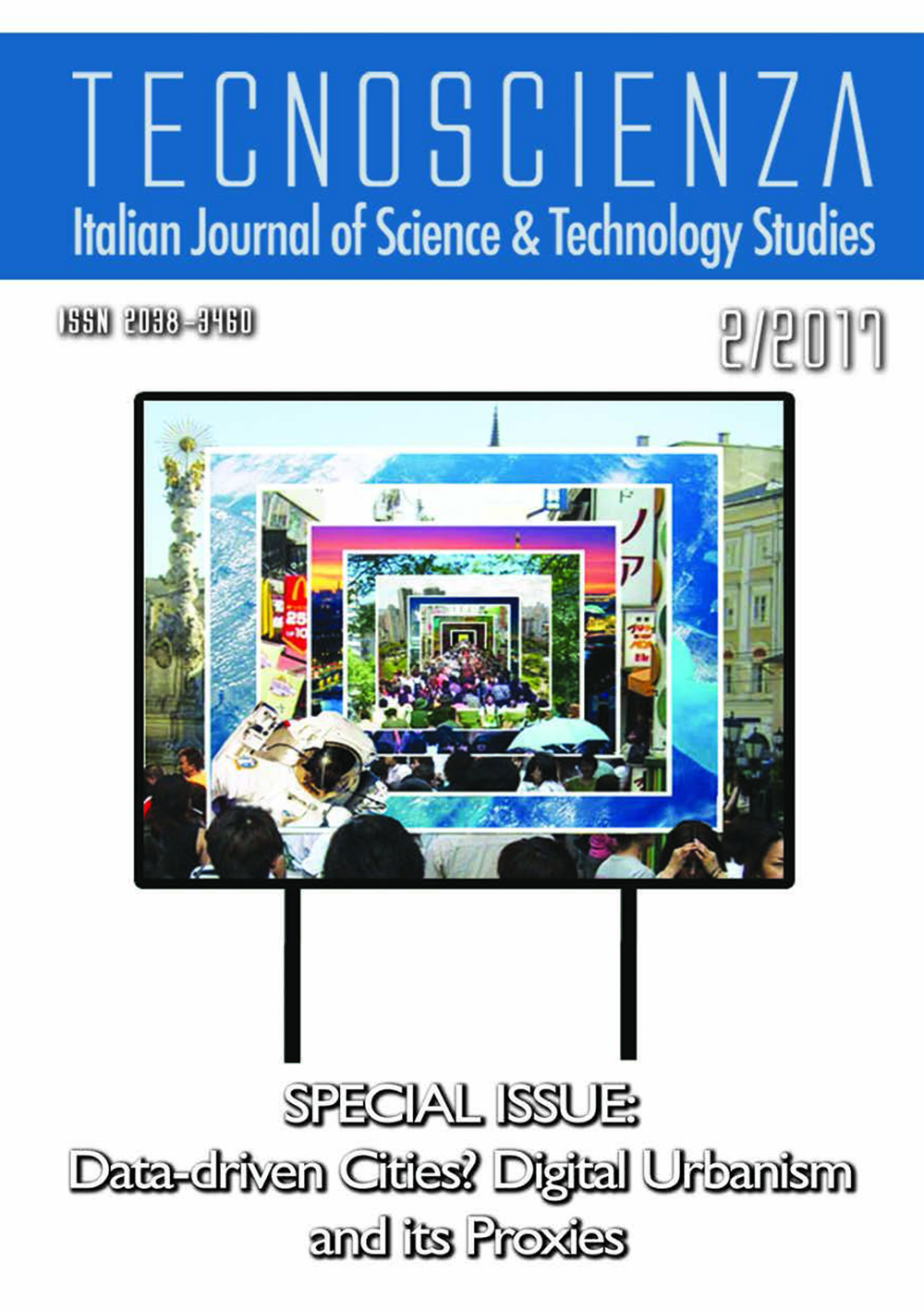The Urban Stack. A Topology for Urban Data Infrastructures
DOI:
https://doi.org/10.6092/issn.2038-3460/17377Keywords:
interface, infrastructure, on-demand economy, stack, urban dataAbstract
In this article, I develop the concept of the “urban stack“ to elucidate how urban data infrastructures gain legitimacy and produce value in capitalist cities. Using two case studies, I study how the stack can incorporate both digital and non-digital components into its hierarchical topology. Heterogeneous components are strung together not only through technological means, as might be inferred from the emphasis on digitality in smart city literature, but also through the “soft infrastructures“ of legal designations, franchise agreements, privacy policies, and info-graphics. A topological comparison between the case studies yields three novel insights: first, urban data infrastructures exploit extant infrastructural conditions; second, technical and protocological operations at the control layer can be used to legitimate ontological claims; and third, technology producers employ a selective and asymmetrical display of information at the level of the interface in order to manage mobile urban populations in real-time. From these insights, it is possible to reach a more abstract conclusion: value production for urban data infrastructures hinges on their producers’ ability to enroll heterogeneous elements into their stacked configuration and to then use this configuration to control the flow of information.





